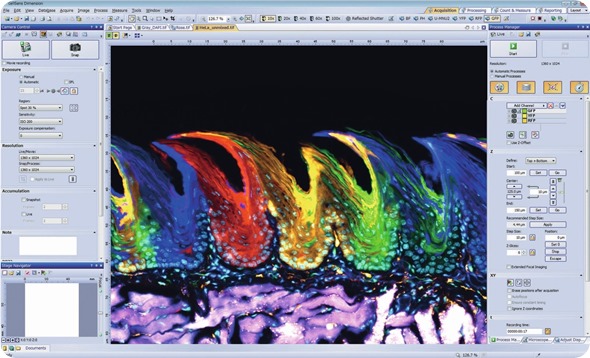Assisting researchers in gaining a deeper understanding of dynamic biological processes, the new cellSens imaging software (version 1.12) ensures the most efficient use of valuable time-lapse experiments and the latest microscopy hardware. Building on the capabilities introduced by Olympus with its unique Graphical Experiment Manager (GEM) interface, cellSens 1.12 allows the user to truly get in touch with their sample.

Enabling effortless setup of complex acquisition sequences and protocols, the GEM presents an intuitive method to seamlessly control motorised hardware, delivering outstanding ease and efficiency for advanced live cell imaging applications. In cellSens 1.12, the GEM has further evolved to maximise the efficiency of multicolour z-stacking experiments. Prioritising the use of fast devices such as piezometric z-axis modules reaches a new level of imaging speed, with the freedom to choose the sequence of motorisation movements. Hardware support is now also extended to include the latest third party digital camera models, including the Hamamatsu ORCA flash 4.0 LT and Andor Zyla 5.5 models, allowing researchers to pick the optimum camera for their chosen study.
Enhancing the efficiency of time-lapse applications, the improved GEM also enables investigations into short-term dynamics and long-term sample evolution side by side. Capturing fast sequences at multiple points in addition to the primary time-lapse, the GEM maximises the level of information that can be gathered during a single experiment. Moreover, the user can now directly react to changes in sample behaviour when running a real-time analysis. Thanks to on-line creation or modification of the Regions of Interest (ROI), structures can be investigated as they transform and emerge, capturing unexpected events without the need for a repeat experiment.
cellSens is an expandable platform with additional software modules to suit every need, and the range now includes the ‘Photomanipulation’ Solution. Operating alongside the Olympus IX3-FRAP unit, this new extension is perfect for managing a range of experiments such as Fluorescence recovery After Photobleaching (FRAP), Photoconversion and Optogenetics.
Combined with the capacity to efficiently capture long time-lapse series, the new features introduced with cellSens 1.12 present new opportunities for live cell imaging. For more information, please visit www.olympus-europa.com/cellSens.